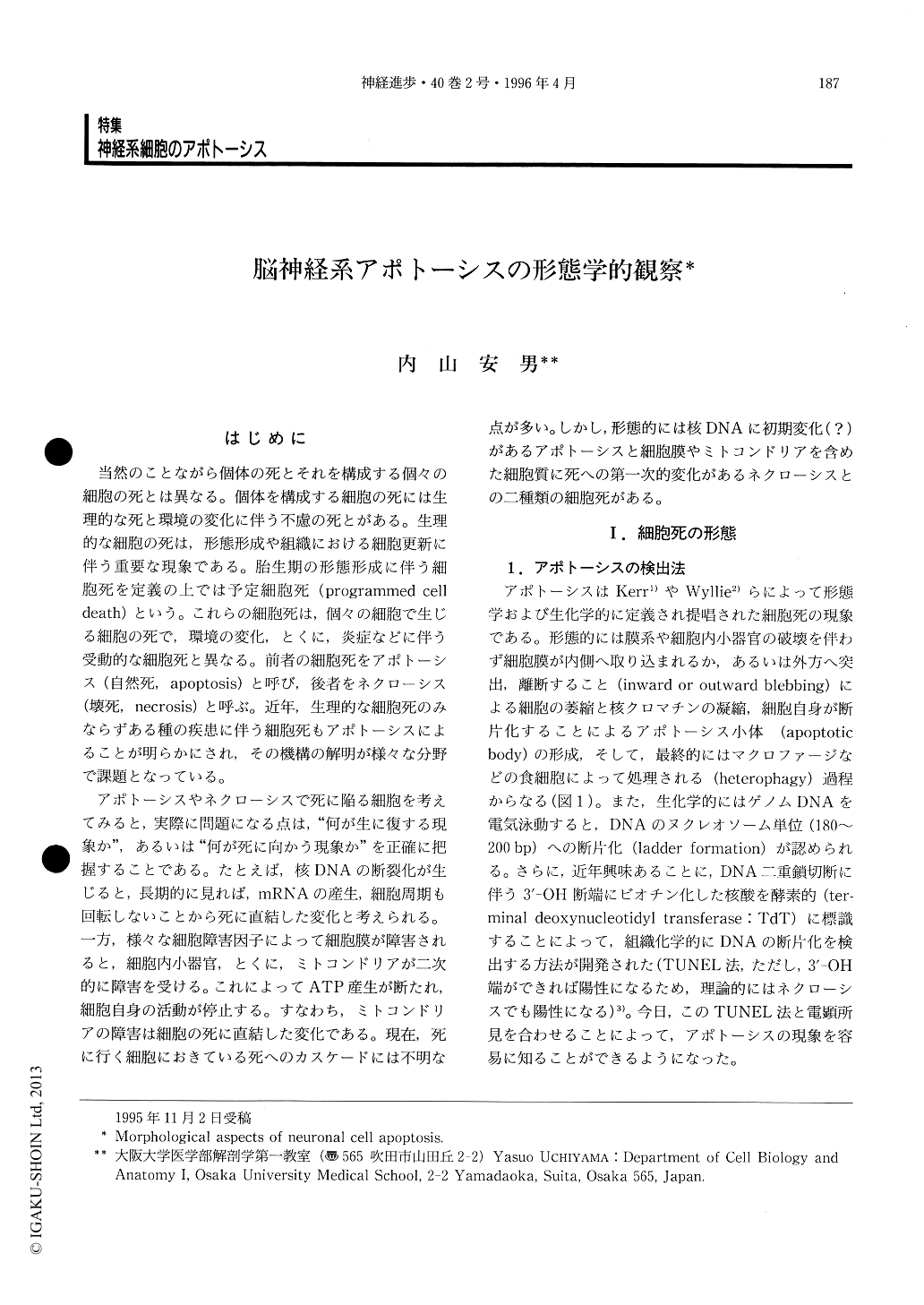Japanese
English
- 有料閲覧
- Abstract 文献概要
- 1ページ目 Look Inside
はじめに
当然のことながら個体の死とそれを構成する個々の細胞の死とは異なる。個体を構成する細胞の死には生理的な死と環境の変化に伴う不慮の死とがある。生理的な細胞の死は,形態形成や組織における細胞更新に伴う重要な現象である。胎生期の形態形成に伴う細胞死を定義の上では予定細胞死(programmed celldeath)という。これらの細胞死は,個々の細胞で生じる細胞の死で,環境の変化,とくに,炎症などに伴う受動的な細胞死と異なる。前者の細胞死をアポトーシス(自然死,apoptosis)と呼び,後者をネクローシス(壊死,necrosis)と呼ぶ。近年,生理的な細胞死のみならずある種の疾患に伴う細胞死もアポトーシスによることが明らかにされ,その機構の解明が様々な分野で課題となっている。
アポトーシスやネクローシスで死に陥る細胞を考えてみると,実際に問題になる点は,“何が生に復する現象か”,あるいは“何が死に向かう現象か”を正確に把握することである。たとえば,核DNAの断裂化が生じると,長期的に見れば,mRNAの産生,細胞周期も回転しないことから死に直結した変化と考えられる。
Since it was suggested that accidental cell death due to environmental perturbation may fundamen-tally differ in mechanism from naturally occurring cell death in normal cell turnover, many trials to discriminate between two major types of cell death have been performed. In these studies, onlymorphological approaches could classify cell death into two categories-apoptosis and necrosis. Recent molecular studies have revealed genes which regulate cell death and survival.

Copyright © 1996, Igaku-Shoin Ltd. All rights reserved.


